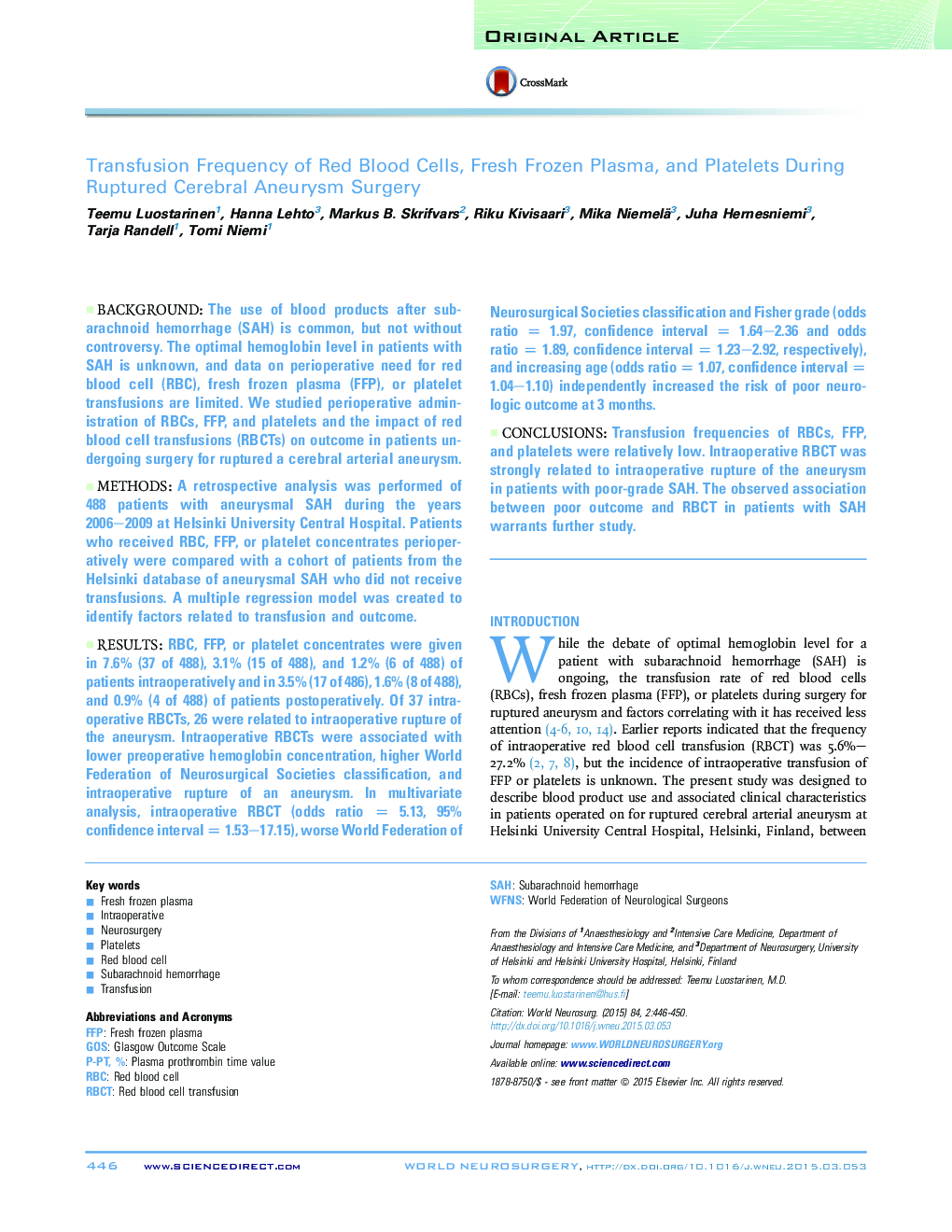| کد مقاله | کد نشریه | سال انتشار | مقاله انگلیسی | نسخه تمام متن |
|---|---|---|---|---|
| 3094805 | 1190895 | 2015 | 5 صفحه PDF | دانلود رایگان |
BackgroundThe use of blood products after subarachnoid hemorrhage (SAH) is common, but not without controversy. The optimal hemoglobin level in patients with SAH is unknown, and data on perioperative need for red blood cell (RBC), fresh frozen plasma (FFP), or platelet transfusions are limited. We studied perioperative administration of RBCs, FFP, and platelets and the impact of red blood cell transfusions (RBCTs) on outcome in patients undergoing surgery for ruptured a cerebral arterial aneurysm.MethodsA retrospective analysis was performed of 488 patients with aneurysmal SAH during the years 2006–2009 at Helsinki University Central Hospital. Patients who received RBC, FFP, or platelet concentrates perioperatively were compared with a cohort of patients from the Helsinki database of aneurysmal SAH who did not receive transfusions. A multiple regression model was created to identify factors related to transfusion and outcome.ResultsRBC, FFP, or platelet concentrates were given in 7.6% (37 of 488), 3.1% (15 of 488), and 1.2% (6 of 488) of patients intraoperatively and in 3.5% (17 of 486), 1.6% (8 of 488), and 0.9% (4 of 488) of patients postoperatively. Of 37 intraoperative RBCTs, 26 were related to intraoperative rupture of the aneurysm. Intraoperative RBCTs were associated with lower preoperative hemoglobin concentration, higher World Federation of Neurosurgical Societies classification, and intraoperative rupture of an aneurysm. In multivariate analysis, intraoperative RBCT (odds ratio = 5.13, 95% confidence interval = 1.53–17.15), worse World Federation of Neurosurgical Societies classification and Fisher grade (odds ratio = 1.97, confidence interval = 1.64–2.36 and odds ratio = 1.89, confidence interval = 1.23–2.92, respectively), and increasing age (odds ratio = 1.07, confidence interval = 1.04–1.10) independently increased the risk of poor neurologic outcome at 3 months.ConclusionsTransfusion frequencies of RBCs, FFP, and platelets were relatively low. Intraoperative RBCT was strongly related to intraoperative rupture of the aneurysm in patients with poor-grade SAH. The observed association between poor outcome and RBCT in patients with SAH warrants further study.
Journal: World Neurosurgery - Volume 84, Issue 2, August 2015, Pages 446–450
